AIR SPOTLIGHT
NATIONAL LOGISTICS POLICY
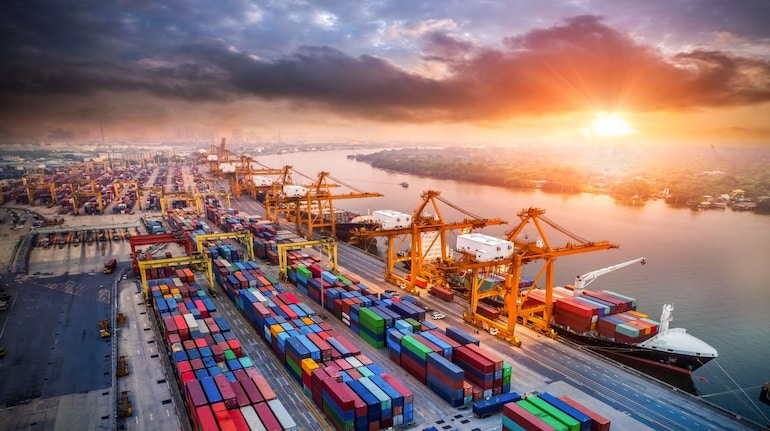
Disclaimer: Copyright infringement not intended
Context
- Prime Minister Narendra Modi on his 72nd birthday announced the National Logistics Policy (NLP), aimed at easing the movement of goods and boosting the trade sector in the Indian economy.
- Launched on the same day as the re-introduction of cheetahs in India, the PM referred to the event by saying that luggage should move quickly like a cheetah while noting that currently, logistical costs account for 13 to 14% of India’s GDP, almost double of what the costs are in developed countries.
Logistics in India
- Logistics is the backbone of the economy. It affects all industries in three sectors – agriculture, manufacturing and services.
- In India, the logistics sector has been marred with inefficiencies, depriving the industry of achieving its full potential.
- The logistics sector makes up 14.4% of the country’s Gross Domestic Product (GDP) but costs 14% of the GDP. The global average logistics cost to a country is approximately 8%. The gap of $180 Bn per annum needs to be addressed to achieve the country’s dream of a $5 Tn economy.
- The largely informal or unorganised sector has contributed to the country’s growth, but its structural fragmentation has been neglected for far too long.
- In recent years, there has been a paradigm shift in the logistics sector with the move towards making it an organised sector.
- The government of India institutionalised the Logistics Division under the Department of Commerce in 2017.
- The Department of Commerce here onwards became responsible for the integrated development of the logistics sector.
- The action plan includes integrated sector development through policy changes, improving existing procedures, identifying bottlenecks and gaps, and introducing technology. It is undoubtedly the right step towards the regularisation of the sector.
- There have been several developments since then that have further triggered a much-needed shift in the sector.
National Logistic Policy
- The policy aims to bring down logistics costs in India to attain global benchmarks by 2030. The government targets to place India among the top 25 countries by 2030.
- It also seeks to improve India’s ranking in the Logistics Performance Index from 44th in 2018 globally and create a data-driven decision support mechanism for an efficient logistics ecosystem.
- The framework comprising the Empowered Group of Secretaries (EGoS) under the PM Gati Shakti national master plan will monitor the implementation of the policy.
- A Services Improvement Group will also be set up for monitoring of parameters of processes, and regulatory and digital improvements in the logistics sector.
- The policy implementation will stress the development of warehouses, promotion of standards, digitization and automation across the logistics value chain.
- Among the critical initiatives under the policy are the Unified Logistics Interface Platform (ULIP), the Ease of Logistics Services platform, and the e-handbook on warehousing.
- Fourteen states have already developed their respective logistics policies; for 13 states, it is at the draft stage.
Importance of logistics in the Indian economic landscape
- Prime Minister Narendra Modi in his Independence Day Speech highlighted that India is aiming to become a developed economy and for that, it is important to become a global economic superpower.
- In a path towards economic progress, logistics plays an important role. In the case of India, it aspires to increase its domestic trade and exports for which logistics plays a significant role.
- Another important area of logistics is to reduce the cost and time.
- At present, India’s average transportation cost is 13 to 15%, whereas it is 8 to 10% in advanced countries.
- The time taken in international trade is of huge importance. In the case of agri-commodities, the excess time taken may lose the credibility of the product.
- Ongoing projects like Bharatmala and Sagarmala will help reduce cost and time by developing the required infrastructure.
While launching National Logistics Policy (NLP), the PM said that ‘Indian cargo should be run as fast as cheetah’. This will improve the last mile connectivity, speed up cargo movement, integrate digital data systems and will make the industry more competitive at the domestic and global levels.
What are recent initiatives taken by the government concerning logistics?
- Initiatives in India have a multimodal transport system which composes of railways, roadways, seaways and airways. For example, e-SANCHIT (e-Storage and Computerized Handling of Indirect Tax Documents) by the Central Board of Indirect Taxes & Customs (CBIC) for paperless processing, and uploading of supporting documents, to facilitate trading across Borders.
- This has reduced the time taken by faceless assessment in the clearance of customs.
- Another important initiative is the Unified Logistics Interface Platform (ULIP), ULIP is designed for enhancing efficiency and reducing the cost of logistics in India by creating a transparent, single-window platform to provide real-time information to all stakeholders.
- It was emphasized that the solution should have visibility of multi-modal transport and all the existing systems should be integrated with the ULIP system to create a National Single Window Logistics Portal.
- ULIP will provide real-time monitoring of cargo movement and ensure confidentiality of data with end-to-end encryption. It will also provide for a comprehensive reduction in logistic costs.
The NLP makes a way for a framework to set up multi-modal logistics parks under which states will be involved. This is aimed at seamless integration of various modes of transport and also a framework for accelerated development of advanced technologies in warehousing.
How important these elements of NLP are?
- Multimodal transport compose of road, rail, water and air, needs integration and connectivity for seamless transport of goods and people.
- As part of the state subject, multimodal transport by way of cooperation from the states will be of huge significance. States like Gujarat, Haryana, Himachal Pradesh, etc have already released their draft logistic policy and 13 more states are in the process of drafting the logistic policy.
- Concerning technology, which is particularly used in warehousing in storing perishable goods like meat, poultry, fish, eggs, fruits & vegetables, etc. the government is suffering losses due to a lack of infrastructure and technology. Therefore, the technology will bring modern infrastructure in storing not just food products but also pharmaceutical goods.
- Hence, through strong logistics, India would not only become a $5 trillion economy but will also overtake China as the second biggest economy in the world.
The NLP introduces integrated digital data under one umbrella that would include the data of various government ministries and departments as a coordinated effort.
How this will facilitate a regulatory environment for end-to-end logistics services?
- Just like the Gati Shakti scheme, the logistics are about coordination. It cannot happen unless all the states are involved.
- Hence, the idea of NLP is to develop uniform policy across the country that will integrate state governments, their political ideologies and infrastructure to move ahead in a coordinated manner.
- The NLP will be a classic example of cooperative federalism, where all the states come together in the interest of the business, growth and promoting the cause which is common to all states i.e., strong logistics.
India is a geographically diverse country with huge masses of population and Prime Minister Narendra Modi has regularly lauded India to encourage production by the masses i.e., small-scale producers either in the manufacturing or the agricultural sector.
Will NLP bring ease to such small businessmen?
- At present, over 95% of the business are part of the micro, small and medium enterprises (MSME), without taking care of their interest no logistic policy can be successful.
- Therefore, the NLP has taken care of smaller size consignment where a trader’s 5 kg of the consignment will be clubbed with other such types of consignment with the help of technology i.e., by booking online.
- The smaller size consignment will be the most benefit from this new policy through technology and integrated, concerted & coordinated efforts.
The NLP aims to enhance the visibility of customers and enable logistics companies to adopt digitisation on a much larger scale. More importantly, the policy will spur investment across the logistics sector. The stakeholders feel there has to be an alignment of the policy across all States to be effective. The trade is confident that an empowering provision will follow soon for effective implementation of the policy at ‘cheetah’ speed.
https://newsonair.gov.in/Spotlight.aspx#
https://t.me/+hJqMV1O0se03Njk9

NEWS IN BRIEF: PRELIMS SPECIAL
PM Modi’s visit to Gujarat
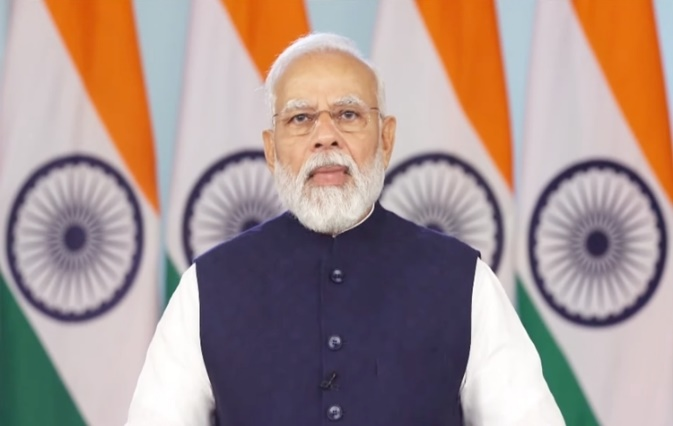
Disclaimer: Copyright infringement not intended
Context
- Prime Minister Narendra Modi to inaugurate and lay the foundation stone of various development projects worth around 29,000 crore rupees during his two-day visit to Gujarat.
Development Projects
- On his first day of the visit, Mr Modi will lay the foundation stone and dedicate various projects worth more than 3400 crore rupees in Surat.
- Thereafter, he will travel to Bhavnagar where he will lay the foundation stone and inaugurate multiple developmental initiatives worth over 5200 crore rupees.
- The Prime Minister also will inaugurate the 36th National Games at Narendra Modi Stadium in Ahmedabad besides attending the Navratri Festival.
- The Prime Minister will flag off Gandhinagar- Mumbai Vande Bharat Express at Gandhinagar station and travel on the train from there to Kalupur Railway Station.
- He will also flag off the Ahmedabad Metro rail project and take a metro ride from Kalupur station to Doordarshan Kendra metro station.
https://newsonair.gov.in/News?title=PM-Modi-to-inaugurate%2c-lay-foundation-stone-of-various-development-projects-during-his-two-day-visit-to-Gujarat&id=448400
https://t.me/+hJqMV1O0se03Njk9
DefExpo 2022
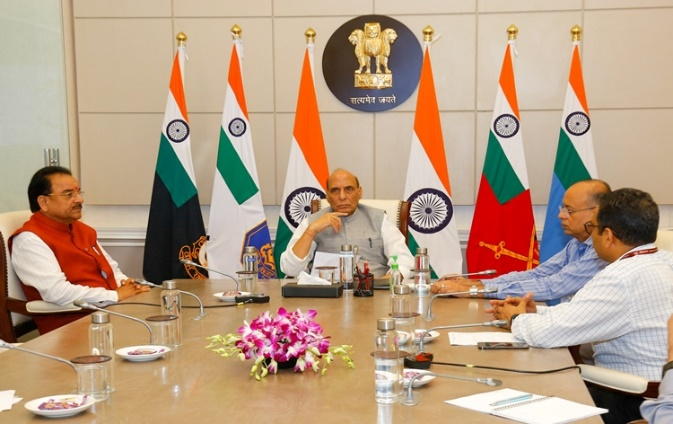
Disclaimer: Copyright infringement not intended
Context
- Defence Minister Rajnath Singh reviewed the preparations for the forthcoming DefExpo 2022. He was briefed by officials about the extensive arrangements being made by multiple stakeholders for the event.
About DefExpo 2022
- India’s flagship defence exhibition — DefExpo 2022, which was postponed in March, will be held in Gandhinagar from October 18 to 22.
- The five-day event to be held ahead of Diwali will have three business days and two public days. Live demonstrations showcasing the equipment and skill set of the armed forces, DPSUs and industry will be held on all five days at the Sabarmati riverfront in Ahmedabad.
- The event that was scheduled from March 10 to 14 at the same venue was postponed citing “logistic problems” a couple of weeks after Russia attacked Ukraine.
- The event will stick to a three-venue format, where exhibits will be displayed at Helipad Exhibition Centre at Gandhinagar, an inaugural event and seminars to be held at Mahatma Mandir and a live demo at the Sabarmati riverfront.
- The exhibition is being planned with events such as Bandhan for forging partnerships between companies; seminars and webinars showcasing start-ups/MSMEs; Artificial Intelligence in defence; student visits and showcasing Gujarat as an investment destination for the aerospace and defence sector, etc.
https://newsonair.gov.in/News?title=Defence-Minister-Rajnath-Singh-reviews-preparations-for-forthcoming-DefExpo-2022&id=448399
https://t.me/+hJqMV1O0se03Njk9
World Heritage Site
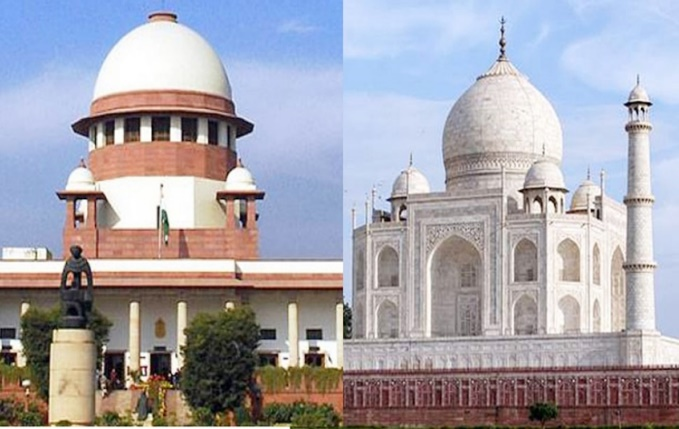
Disclaimer: Copyright infringement not intended
Context
- The Supreme Court has directed the Agra Development Authority to immediately stop all commercial activities within a 500-metre radius from the peripheral wall of the Taj Mahal.
- The Apex Court was hearing an application seeking direction from the authorities to prohibit commercial activities within the 500-metre radius of the UNESCO World Heritage Site.
World Heritage Site
- The United Nations Educational, Scientific and Cultural Organization (UNESCO) seeks to encourage the identification, protection and preservation of cultural and natural heritage around the world considered to be of outstanding value to humanity.
- This is embodied in an international treaty called the Convention concerning the Protection of the World Cultural and Natural Heritage, adopted by UNESCO in 1972.
- There are 40 UNESCO World Heritage Sites in India. Dholavira and Ramappa Temple are the latest addition to the list under the ‘Cultural’ category. ‘Ramappa Temple’, Telangana and ‘Dholavira’, Gujarat which is included in the list of UNESCO World Heritage sites in 2021.
- This decision was made in the UNESCO World Heritage Committee’s 44th session held in China. In 2021 the total number of World Heritage Sites has increased from 38 to 40.
https://newsonair.gov.in/News?title=Supreme-Court-directs-to-stop-all-commercial-activities-within-500-metre-of-Taj-Mahal&id=448393
https://t.me/+hJqMV1O0se03Njk9
Integrated Cryogenic Engines Manufacturing
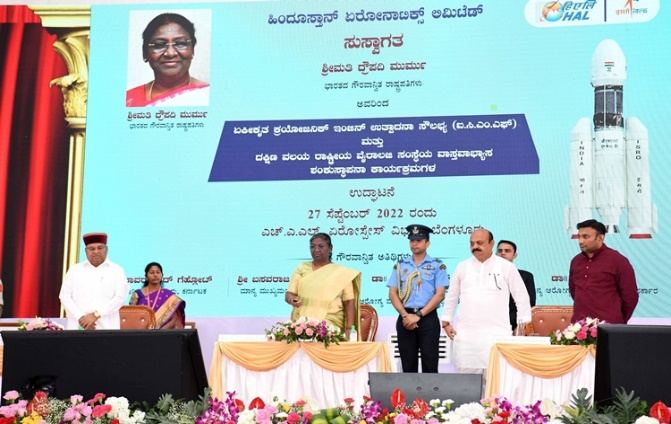
Disclaimer: Copyright infringement not intended
Context
- President Droupadi Murmu inaugurated the Integrated Cryogenic Engine manufacturing facility of Hindustan Aeronautics Limited (HAL) and virtually laid the foundation stone of the South Zone Institute of Virology in Bengaluru.
- An Integrated Cryogenic Engine Manufacturing Facility (ICMF) would cater to the entire rocket engine production under one roof for the Indian Space Research Organisation (ISRO).
About ICMF
- The state-of-the-art ICMF, set up over an area of 4,500 square metres houses over 70 hi-tech equipment and testing facilities for manufacturing cryogenic (CE20) and semi-cryogenic (SE2000) engines of Indian rockets.
- In 2013, an MOU was signed with ISRO for establishing the facility for manufacturing cryogenic engine modules at HAL, Aerospace Division, and it was subsequently amended in 2016 for setting up of ICMF with an investment of Rs 208 crore.
- Cryogenic engines are the most widely used engines the world over in launch vehicles. Due to the complex nature of the cryogenic engine, to date, only a few countries — the USA, France, Japan, China and Russia — have mastered the cryogenic technology.
- On January 5, 2014, India successfully flew GSLV-D5 with a cryogenic engine and became the sixth country in developing cryogenic engines (made by ISRO through private industries) and became the sixth country in developing cryogenic engines.
- Space exploration in the future is mostly dependent upon cryogenic technology.
https://newsonair.gov.in/News?title=President-Droupadi-Murmu-inaugurates-Integrated-Cryogenic-Engines-Manufacturing-Facility-of-HAL-in-Bengaluru&id=448371
https://t.me/+hJqMV1O0se03Njk9
Ayushman Bharat Digital Mission
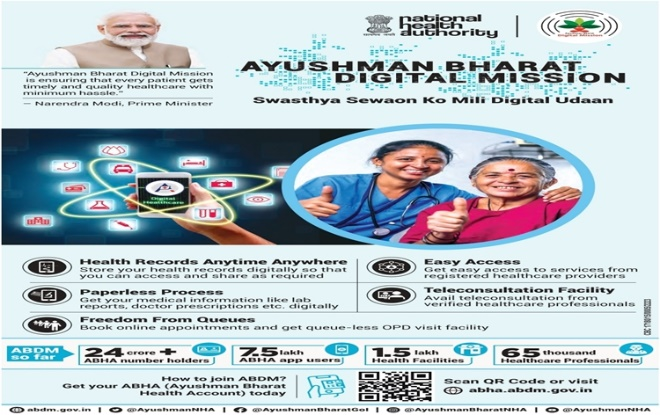
Disclaimer: Copyright infringement not intended
Context
- Ayushman Bharat Digital Mission completed one year of its launch. The scheme is transforming India's Digital Healthcare landscape.
- Till now, over 24.38 crore Ayushman Bharat Health Account ABHA IDs have been created, over one lakh 59 thousand health facilities have been registered, over 90 thousand healthcare professionals have been registered and over 1.36 crore health records have been linked.
About ABDM
- The Ayushman Bharat Digital Mission (ABDM) aims to develop the backbone necessary to support the integrated digital health infrastructure of the country. It will bridge the existing gap amongst different stakeholders of the healthcare ecosystem through digital highways
- The ABDM Ecosystem
https://newsonair.gov.in/News?title=Ayushman-Bharat-Digital-Mission-completes-one-year-of-its-launch&id=448382
https://t.me/+hJqMV1O0se03Njk9









